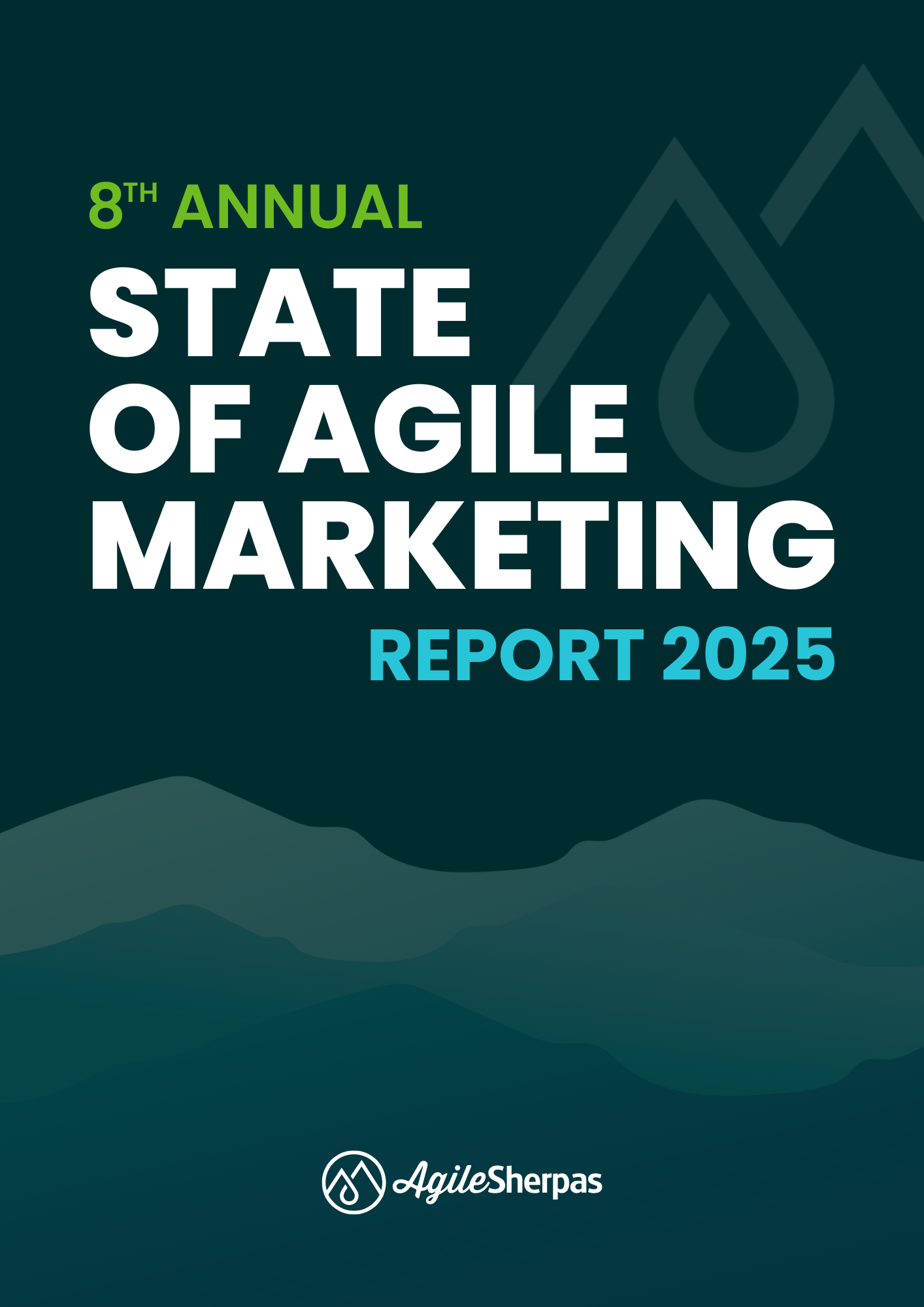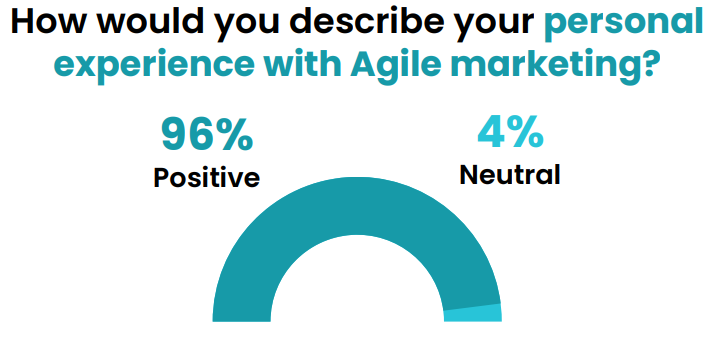
8 Years of Marketing Agility
Every year AgileSherpas connects with thousands of marketers to keep our finger on the pulse of marketing agility. This year, we surveyed 430 marketers across the globe, 63% of whom in leadership roles to understand how agility is helping them thrive in a disruptive, AI-driven landscape.
We've condensed the critical insights into the 2025 State of Agile Marketing Report, and you can get your copy for free right here!
Download Report
Fully Agile teams are 3x more likely to be successful with AI
In 2025, AI is transforming how marketers operate with every passing week. This year's report clearly shows us that those who embraced Agile ways of working are in the best position to be successful.


96% of marketers have a positive experience with Agile
In 2025, a year characterized by AI disruption of the marketing landscape, Agile is considered to be flexible, efficient, and fast. Per the report: 96% of marketers applying Agile ways of working have a very positive experience. Only 4% of the surveyed Agile marketers report a negative experience.
66% of Agile marketers reported lower stress levels
In 2025, Fully Agile teams are 6x as likely to say they’re much less stressed compared to somewhat Agile teams!

Spot the Trends Year-Over-Year
2025 opened up new avenues of inquiry as marketers mature in their adoption. This year, we’re grateful to have been able to include data from not just North America, but Latin America, Europe, and Asia too. From barely one third of marketers using Agile seven years ago, to the rise of hybrid frameworks, and the continued struggles with education, the path has been long and winding.
Check out these key findings from the previous six reports:
-
Key Findings in 2018
- 37% of marketing teams were using an Agile process
- 61% of traditional marketers reported plans to go Agile within 12 months
- 37% of marketers pointed out lack of training or knowledge about Agile approaches as their biggest adoption barrier
-
Key Findings in 2019
- 32% of marketing teams were considering themselves Agile
- 50% of traditional marketers were planning to adopt Agile within a year
- 31% of marketers were citing lack of education as the top barrier to adopting Agile
-
Key Findings in 2020
- 42% of all marketers were working in an Agile environment
- 42% of traditional marketers were intending to adopt Agile within a year
- 44% of marketers pointed out lack of training or knowledge about Agile approaches as their biggest adoption barrier
-
Key Findings in 2021
- 51% of all surveyed marketers were using Agile
- 93% of marketing teams were planning to adopt Agile within the next 12 months
- 43% of all surveyed marketers were citing lack of training or knowledge about Agile approaches as their biggest adoption barrier
-
Key Findings in 2022
- 91% of non-Agile marketing departments planned to implement Agile within the year
- 40% of marketers cited lack of training as the biggest barrier to adopting Agile
- 63% of Agile marketers were able to better manage changing priorities
-
Key Findings in 2023
- 51% of traditional marketers were more likely to adopt Agile because of the current economic climate
- 76% of Agile marketers were able to prioritize work more effectively
- 80% of Agile marketers found Agile certification courses valuable
-
Key Findings in 2024
- 83% of marketers had a positive experience with Agile
- 86% of all marketing organizations planned to transition some/all of their marketing teams to Agile.
- 98% of marketers rated their Agile marketing implementation as successful
Watch: 8th Annual State of Agile Marketing Webinar
Our Partners Over the Years
With Gratitude to Our Valued Partners
Since 2018, AgileSherpas has released the first and only definitive report on marketing agility. The Eight Annual State of Agile Marketing Report was produced between December 2024 and February 2025. Through interpreting data gathered from respondents across the globe (and the thousands from previous years), we can continue to improve our understanding of Agile ways of working:
- Where Agile is going
- How marketers best adopt and adapt Agile
- How they're putting Agile into practice
Thank you to our previous report partners: Agile Marketing Alliance, Tenon, Upland Kapost, CoSchedule, Aprimo, Forrester, Adobe Workfront, and IBMiX.
Download the Report
Get the latest State of Agile Report to keep up with the latest and greatest in marketing agility. You'll also receive all the previous reports, so you can follow along with the year-over-year trends.
